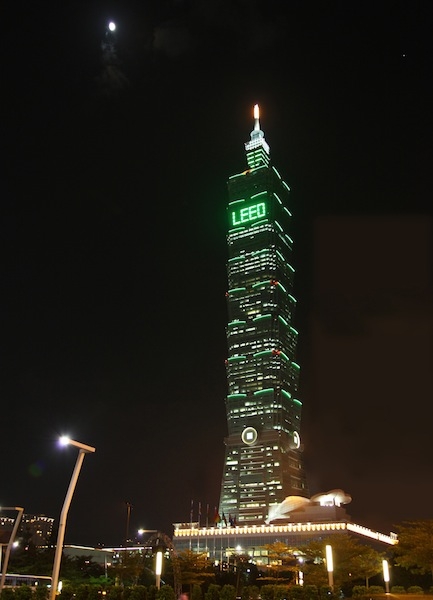
News
Increasing energy efficiency and optimizing building automation at Taipei 101
October 7, 2011 - At 508 metres, Taipei 101 is one of the world’s tallest structures, but it has also been awarded LEED Platinum certification for energy efficiency and environmental design. And the Siemens Building Technologies Division played a role in helping Taipei 101 attain the certification.
October 7, 2011 By Anthony Capkun

“Buildings account for 40% of the world’s energy consumption and 21% of the global CO2 emissions,” explained Hubert Keiber, CEO of Siemens’ Building Automation Business Unit. “The energy and cost saving potential is substantial. Owners or operators of green buildings can not only generate a significant impact on environmental mitigation, but they can also substantially save costs over the entire lifecycle of the building.”
Over the past two years, Taipei 101’s building automation and energy efficiency were optimized to achieve a 10% saving in electricity usage, water consumption and garbage production. Indoor air quality is now meeting the highest standards as laid out by LEED. Thus, Taipei 101’s energy consumption is 30% lower in comparison to that of an average building, leading to annual energy cost savings of about $700,000 US.
It is the world’s first building of its size, says Siemens, to receive the LEED-EBOM Platinum certification (Leadership in Energy and Environmental Design for Existing Buildings: Operations and Maintenance). This recognition can only be attained by buildings which fully meet the energy efficiency and environmental sustainability requirements defined by the standard.
During the certification process, Siemens supplied expertise in building operations and, in partnership with EcoTech International and Steven Leach Associates, provided the operators of Taipei 101 with consulting services in all aspects of the Green Building certification.
Siemens’ Energy Monitoring and Control System (EMCS) facilitated the streamlining of the operation and control of the HVAC equipment throughout the complex, optimizing energy usage. Applying improved algorithms for the chiller plant and changing the sequence of operation also considerably increased the efficiency of the cooling system. This, plus energy modelling, energy audits, commissioning services and the installation of additional sensors, made the difference.
Power consumption is 4.8 million kWh lower than prior to implementing the measures required to meet the LEED criteria. After reaching the LEED-EBOM Platinum level, Taipei 101 becomes the tallest Green Building in the world.
“Managing a building of this scale brings a lot of challenges to the building automation system. On the one hand it requires effective climate and lighting control, reliable safety protection and efficient flow of visitors. On the other hand, all the systems and plants have to be fully integrated into a reliable, truly automated energy management and control system,” said Peter Halliday, VP of the Siemens Building Technologies Division in Taiwan.
“As our tower was already very energy efficient and with proper management systems in place, we had the confidence to apply for the LEED-EBOM Platinum Certification,” said Harace Lin, chair of Taipei 101. “We believe that this certification is meaningful—not only to us, but to the entire real estate industry, as it shows that eco-responsibility can perfectly go in line with cost considerations and efficiency gains.”
Print this page